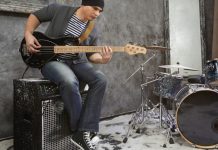
CLANCY OVERELL | Editor | CONTACT
For two years Australian State and Territory governments have been auditing buildings and compiling lists of those covered in the ‘Grenfell cladding’ – a highly flammable external insulation material.
However, in NSW, the findings are a little inconvenient. Which is why they aren’t really being released.
Over 440 structures in New South Wales are covered in the flammable cladding, likely a result of the absolute free rein residential developers have had in Sydney over the last decade, as the political and media classes work together to keep breathing air into the hysterical Australian housing bubble by turning a blind eye to the criminally negligent construction of one-lick-of-paint apartment buildings.
However, due to the already fragile state of the Sydney property bubble, and the amount of State MP in NSW that have nest eggs in the shape of investment apartments in this same market – the names of these buildings will not be released.
While the slow cracking and sinking of poorly built residential towers in Sydney southern suburbs may eventually fuck the entire Australian economy, a full-blown recession pales in comparison to the suffering that would be caused if one of these many towers went up in flames.
This of course follows London’s Grenfell Tower disaster in 2017, which saw a fire break out in the 24-storey block of low-income flats in the city’s west. The structure caught fire within minutes. It caused 72 deaths and injured hundreds more.
After the evacuations of Mascot Towers and Opal Tower, the likelihood of a Grenfell-style disaster in Sydney seems like more of a when not if.
The list of New South Wales buildings covered in Grenfell Cladding is now in the hands of the senate, but will still remain a secret until the elected state officials in both houses of NSW Parliament are able to offload their investment properties.
They have defended this decision publicly by declaring that releasing the names of these buildings ‘may encourage arson’ – which is a very weird concern to have about buildings that could go up in flames if sunlight was reflected onto it on a 45 degree day.










